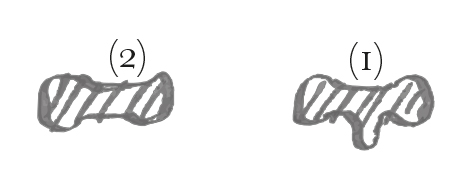From G. S. Owen 19 December 1881
Wonston | Micheldever Station | Hants.
Dec 19 81.
Sir,
I have been asked to send you the enclosed items—wh: I am told will interest you—
As I have seen them myself I can vouch for their accuracy. Apologising for occupying yr. valuable time—
I am | Yrs truly | G S Owen
Rattlesnakes
On the Prairies of N. Mexico, some years ago, we were constantly meeting with rattlesnakes in large numbers. Grasshoppers were very common also, & such was the resemblance between the rattle of the snake & the sound of the grasshopper, that I have repeatedly started aside under the impression that a snake was about to “strike”, having afterwards found that it was only the grasshopper after all—1
We have also opened snakes and taken birds from the inside.
My belief is, that this rattle, by its close imitation of the grasshopper attracts the bird for the benefit of the snake.
I have also remarked that the rattle of the snake frequenting rocky, broken ground is formed differently from that of the snake frequenting the smooth prairie lands.—2

The former is strengthened as at (1). by an extra web & not flat as at (2)— in fact one wd be represented by a bar of flat iron the other by a T iron. wh: seems to me to be a proper provision of nature—
My assistants firmly believed that the rattles of the snake when worn inside the hat wd. cure head-ache & therefore always kept them for that purpose.
Ants
In Brazil, I have seen on the ground, a complete tunnel of living ants3
 thus say 3 inches span × 5 yards long, constructed across a clearing, between the deep shade of the forest on either side. On breaking thro’ this seething mass of ants, I found others carrying their eggs—
thus say 3 inches span × 5 yards long, constructed across a clearing, between the deep shade of the forest on either side. On breaking thro’ this seething mass of ants, I found others carrying their eggs—
I presume this piece of engineering was constructed to protect the eggs from the burning rays of a tropical sun, as no attempt at protection was made on either side of the road wh: was in deep shade—
G S Owen
Footnotes
Summary
Observations on rattlesnakes
and on tunnels built by Brazilian ants.
Letter details
- Letter no.
- DCP-LETT-13565
- From
- George Seymour Owen
- To
- Charles Robert Darwin
- Sent from
- Wonston, Hants.
- Source of text
- DAR 173: 44
- Physical description
- ALS 4pp †
Please cite as
Darwin Correspondence Project, “Letter no. 13565,” accessed on


